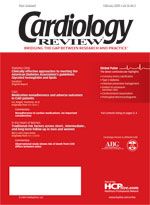HMG-CoA reductase inhibitors and diabetic retinopathy
Increased serum lipid levels in diabetic patients are associated with an increased risk of macular edema, retinal hard exudates, and secondary visual loss.
Increased serum lipid levels in diabetic pa­tients are associated with an increased risk of macular edema, retinal hard exudates, and secondary visual loss.1,2 Although the management of diabetic macular edema remains mostly ophthalmic (with laser or intravitreal pharmaceutical agents, or both), concomitant lipid-lowering treatment is stressed by ophthalmologists and coordinated with primary care physicians, endocrinologists, and cardiologists. Preliminary studies are already showing the beneficial effects of combined ophthalmic and systemic treatment on visual prognosis.3
Case reports on the effects of systemic lipid-lowering medications alone on diabetic macular edema and retinal lipid deposits remain rare.4 In 1 study, retinal hard exudates in 3 patients with diabetic end-stage renal disease and severe anemia resolved after treatment with erythropoietin.5
The case reported by Tayek and colleagues describes a patient with diabetic reti­no­p­athy and retinal hard exudates. The lipid exudation improved after oral treatment with an HMG-CoA reductase inhibitor (statin), which lowered low-density lipoprotein levels over a 2-year period. The patient apparently did not receive any ophthalmic treatment.
This case report certainly raises the important question of the role of systemic lipid-lowering therapies in preventing and treating diabetic ocular disease. The following comments, however, are in order. The initial worsening of the retinopathy, despite the improved glycosylated hemoglobin, is not unusual and is well documented in the Diabetes Control and Complications Trial.6 The final regression of the hard exudates could have occurred spontaneously with the improved control of the hyperglycemia or other systemic factors, such as hypertension. Although the beneficial effect of systemic statins on diabetic retinal exudates is implied, their actual therapeutic contribution cannot be proven in this case.
Once again, long-term controlled studies are needed to determine the potential role of statins in the prevention and treatment of diabetic ocular disease.
